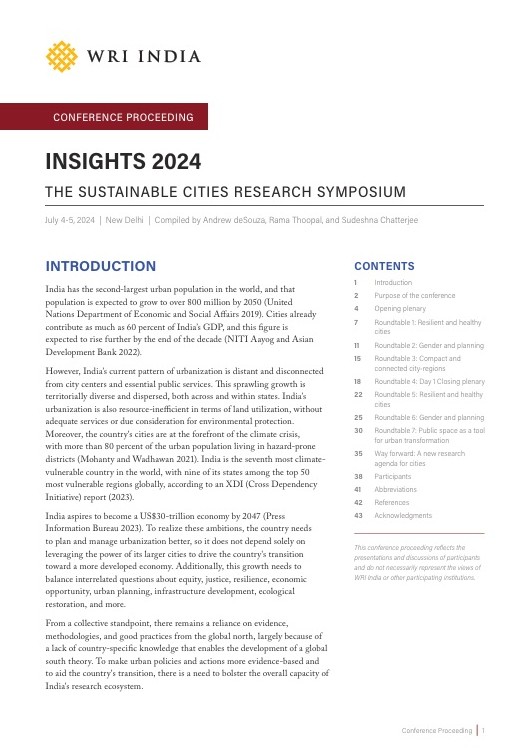Energy for Development in Climate Vulnerable Areas
by e -
Access to electricity ensures increased economic productivity, healthcare services and better educational prospects and is thus crucial for socio-economic development. While grid expansion and advances in the distributed Renewable Energy (RE) industry have made significant efforts to reach unserved and under-served populations, several livelihoods, healthcare and educational facilities still lack this vital resource.
Caught in a vicious cycle of under-development, a potent tool for the rural and remote populations to break out of cyclical poverty is access to electricity. Low incomes and low levels of development make unattractive markets for investment in electricity services. This lack of investment only perpetuates this cycle of poverty.
In addition to this, there’s India’s warming climate, changing rainfall patterns, rising sea levels and a spike in extreme weather events like floods, droughts, heat waves and cyclones. Many of the energy-poor areas in India are also those undergoing land, environment and water degradation, making them further vulnerable to climate change. This environmental degradation leads to socio-economic vulnerability which turns into a downward spiral, often causing more environmental degradation.
Unless the 360 million living in poverty in India make adequate progress on developmental indicators, it will be challenging for the country to face the rapid onset impacts of climate change.
Linking energy to development outcomes
Of the 169 developmental indicators under the Sustainable Development Goals (SDGs), 125 indicators are interconnected with energy access. In spite of this, the linkages between socio-economic development and reliable, affordable and sustainable energy remain largely under-explored. Across the country, extreme weather events are usually accompanied by power outages. This in turn, impacts the ability to provide medical, educational, training and a host of other services. Electricity disruptions from extreme events last for days or sometimes weeks in the more remote areas of the country.
The Economic Survey 2017-18 found that while climate change negatively impacts incomes of all farmers’, those without irrigation facilities suffer more. Reduced rainfall (less than the average 100mm annual rainfall) can impact un-irrigated farm yields by up to 14.7% and farm revenues by 14.3%. Over the years, effects of rapid climate change are leading to increase in frequency and intensity of such weather-related shocks.
Distributed RE solutions have increasingly emerged as an important solution to these challenges. Solar Photovoltaic (PV) powered solutions have been adopted to power classrooms and water purification systems in arsenic-contaminated flood-prone areas. RE-powered boats have provided essential healthcare services in the otherwise inaccessible char (riverine island) areas of Assam. Drinking water supply schemes powered by distributed RE are being implemented in Rajasthan to cope with the lack of potable water. RE-powered cold storages are being set up in partnership with government agencies in Jharkhand to reduce food loss due to spoilage. While these innovations play an important role in driving socio-economic development and in building capacities of vulnerable populations, they need to be scaled up across the country.
Resilience of RE infrastructure in India
While access to electricity is critical, the resilience of the electricity infrastructure to extreme weather events is also important. Extreme weather events have, in the past, caused significant damage to electricity grid infrastructure.
During cyclone Fani in 2019, it was estimated that 20% of all loss to public property was in the power sector. Electricity supply from the grid was unavailable for more than 8 days, at a time when the state was reeling under an intense heat wave. The damage from the more recent cyclones Amphan and Nisarga are still being estimated. The world’s first airport to run on solar power in Kochi experienced damage to solar PV panels, power storage and circuits during the 2018 floods. Repairs took over 11 days.
Power disruptions can result in loss of emergency healthcare services leading to casualties. Loss of communication services can block the dissemination of crucial information, while lack of clean water endangers lives. These affect the poor and marginalized populations disproportionately.
Looking forward
Making RE infrastructure resilient to climate change requires policy linkages across sectors. Infrastructure resilience needs to be planned for within the State Action Plans on Climate Change and in State Disaster Management Plans. It must also be included in rural development and urban development planning discussions. These linkages are critical to ensure that communities in vulnerable areas are better placed to cope with impacts of climate change.
Addressing such policy linkages across sectors requires collaboration across agencies. In February 2020, at a meeting of the District Disaster Management Authority (DDMA) of Kamrup District in Assam, project proposals integrating aspects of climate resilience and energy solutions for disaster preparedness and development were reviewed. Such collaborations are needed at all levels of planning – national, state and local. Conversations should go beyond government agencies, like the discussions at the India Energy for All Summit in February 2020, where national experts representing the Ministry of Finance, the National Disaster Management Authority (NDMA) and leaders in climate policy research, RE companies and disaster relief agencies spoke about increasing energy services for socio-economic development in climate vulnerable areas.
The Economic Survey 2019-20 highlights the need to focus on the ‘nexus’ across sectors to make progress on the SDGs. The interlinkages between energy access, socio-economic development, climate adaptation and infrastructure resilience, is one such nexus that needs focus. We need to identify more solutions that can break this vicious cycle of poor energy access, poverty and low socio-economic development in climate vulnerable areas. Only with a more nuanced understanding of these issues can India meet its SDG commitments and its national goals on poverty reduction.



Add new comment